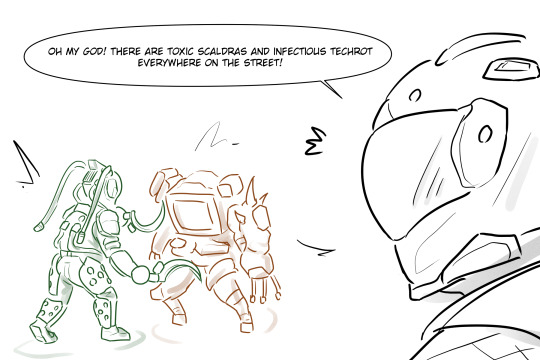#preventive technologies
Explore tagged Tumblr posts
Text
Preventive Technologies for a Safer Future | NoPowerNoProblem
At NoPowerNoProblem, we understand the critical importance of preventive technologies in safeguarding your systems and infrastructure. Our advanced solutions are designed to proactively address potential threats before they cause harm, ensuring the continuous protection of your assets. With a focus on early detection and prevention, NoPowerNoProblem offers a range of cutting-edge technologies tailored to meet the needs of various industries. From power surge protectors to sophisticated monitoring systems, our preventive technologies help minimize downtime, reduce maintenance costs, and extend the lifespan of your equipment. Trust NoPowerNoProblem to provide the reliable and forward-thinking solutions that keep your operations secure and running smoothly. Embrace the future of prevention with NoPowerNoProblem, and stay ahead of the curve in safeguarding what matters most.
0 notes
Text
Hindsight is 20/20, but I don't think you needed to be psychic to guess that destroying ALL the shimmer supply was a bad idea.

In Act Three it took three whole doctors to save Vi's life after she gets slashed by a Noxian blade across the chest. Yet in s1 it took a single drop of shimmer to save Vi from the deep stab in the gut Sevika gave her without any other form of medical intervention.

There's just a really gross sense of irony that Caitlyn and Piltover at large took away Zaun's main source of medical care (as controversial as it may be), and then put it's people through a meat grinder battle while withholding such care.



It doesn't help that the meat grinder battle was useless ploy for Jayce to get close to Viktor and so a lot of people, specifically Zaunites, died for nothing.
#arcane#caitlyn kiramman#vi arcane#gertie arcane#arcane meta#on one hand there's this completely unexplored aspect of arcane#where zaun is a place that actually has developed advance technology to deal with it's ailing population#while Piltover's side lagged behind bcuz they're culture has no real sense of urgency to care for the disabled and ill#Piltover's clean and healthy environment is already a large preventative measure for it's populace so they don't race to develop treatments#and cures#but just like the overall nature of the PnZ conflict in arcane it's inclusion in the show is outright shallow and ultimately dropped by s2#bcuz the writers aren't in fact interested in it#but oh well bcuz i am#that whole finale happened without any sense of shame remorse of self awareness from anyone on the piltovan side#and that wud be fine if ANYBODY else acknowledged including the writers#srsly the only zaunite necessary in that fight was ekko and that's it#everyone else was literally set dressing
563 notes
·
View notes
Text




civilian in the mall
#the only thing the hex had achieved is to prevent them from dying from lethal forces#buuuuut idk man look at those infested parts and techrots around the mall i don't think you can really survive for long#unless the drifter brought whatever technology the tenno had that can cure the infested like neewa#or entrati was lying about that “techrot mutation made his vaccines stop working” part and they still have immunity#anyways. god this took long#i mean. i still made it in one night but still#also wow i draw female frame whaaaat when was the last time i do that... ok tbh i was kinda proud of that rendered piece of mirage i did#warframe#warframe scaldra#warframe techrot#warframe civilian#warframe drifter#warframe nidus#warframe saryn#my art#(i haven't got a name for them i'm just gonna call them civilian or civvie in the tags for now)
315 notes
·
View notes
Text

the brainrot is extreme. heres another silly doodle (ノ≧▽≦)ノΞ●~*



+ obligatory close up of the cute little faces lol
#extremely shitty resolution soz#saiki k#the disastrous life of saiki k.#digital art#dirtbag's saiki k vault >:)#this may or may not be a scene from something im writing... youll see.....#and if anyone asks the poor quality is just to prevent ppl from using it to train ai hahaha'''''''#def not.... just because im bad with technology.....#OH MY GOD WHO SAID THAT????
491 notes
·
View notes
Text

#shitpost#twst#twisted wonderland#rook hunt#twst memes#theyve never said that they HAVE or HAVENT been to the moon to my knowledge#but speaking as someone from a planet that has sent people to the moon. we dont talk about it enough!#i feel like it's something i take for granted. that a society with advanced technology would go to the moon#should i take it for granted? did they have a cold war that spurred leaps and bounds in astrophysics?#did they have an operation paperclip to steal rocket scientists who proved themselves in a past war?#does twisted wonderland have nukes?!#does the existence of magic in twisted wonderland prevent the need for the developments that lead to the creation of nukes?!????#fuck. i wish i knew every vignette and event. i need DATA
91 notes
·
View notes
Note
FINALLY SOMEONE WHO ALSO LOVE CHRONO ❤️❤️❤️

Indeed! Here he is in jail for you anon. He’s wondering how Kai is faring.
#Because quirk suppressing cuffs don’t actually exist in canon I like theorizing how they actually stop various more specialized quirks from#Being used.#You can lock up Kai’s hands or restrain muscular but what kept Kurogiri from warping away?#I imagine they must have some sort of technology that prevents it#possibly the straps across his chest as when they broke he seemed to be able to use his quirk#Therefore: chronostasis preventing ponytail#orb draws#hari kurono#chronostasis mha#mha#bnha#my hero academia#kurono hari
75 notes
·
View notes
Text
Prompt 166
So Danny is going to blame this on Vlad. Everything was going great, his parents had accepted him, Ellie is home for a while as was Jazz, Vlad was going to ghost-therapy along with Jordan to both get over apparently very bad obsession-sickness, and it was finally summer break! Which meant camping, and no ghost stuff for the first time in forever.
He should have known everything was going too well, because that’s just the Fenton luck isn’t it? So he was going to blame this entire thing on Vlad, even if it might maybe be his own fault just a little bit. But how was he supposed to know the glowing rock formation that looked sort of like a portal was actually going to do something?!
Urgh, he’s not going to deal with dimension travel, he already has to deal with time bullshit thanks to his peepaw! At least they’re all in this together and haven’t gotten separated? Ugh. This is going to be annoying.
#dcxdp#dpxdc#dp x marvel#danny phantom crossover#prompts#They definitely get mistaken for some sort of elves fae or other supernatural creatures#The entire family is either halfas or liminal as hell#Very uncanny valley feeling#They’re also camping out over an old site of some sort#Behold! Thanks to Fenton Technology & Vladco Ghost Tech: Invisible tents & supplies!#Jordan is going overprotective guard dog mode on everyone#Ellie wants to go into the nearby (insert city here) to explore#Danny honestly just wants a burger & is preventing the hotdogs from escaping#Family bonding via trying to get back to their own dimension by summer end
288 notes
·
View notes
Text
Hey, pals! Weird Bleach mystery time!!
So, I was perusing the Bleach wiki, as is my wont, when I found this interesting tidbit on the Squad 4 page:
Members of the 4th Division are not allowed in the Human World.
which is cited as coming from Bleach manga; Volume 13, Chapter 111, end of chapter sketch. But when I looked it up, it's this:

It's Squad 4-related, obviously, but it doesn't say anything about the World of the Living. (My copy is the Viz version, and I also checked, ummmm, an online copy that I know of that has a slightly different translation and a compilation I found that someone had made of all the chapter sketches and they were all the same.)
This anecdote is mentioned in more detail under Iemura's entry:
In order to increase his handsomeness, Iemura searched Soul Society for contact lenses but was unable to find any. When he heard rumors of a renegade Shinigami selling contacts for Shinigami in the Human World, Iemura used his self-proclaimed fame and handsomeness to get around the ban on 4th Division members going to the Human World in order to find the contact lenses seller. When the rogue Shinigami instead offered him laser surgery using tiny beams of Reishi, Iemura thought it sounded too good to be true. Upon seeing the machine that performed the surgery, and noticing the dark eyeshadow on the Shinigami's face that resembled burn marks, he chickened out. Due to certain unspecified problems, he can no longer go to the Human World, leaving him wondering what would have happened if he had tried the surgery and if he would still be single.
This is sourced to the chapter sketches accompanying 109-112, which are literally all just Iemura complaining about his job and Squad 11 and Captain Kyouraku, it doesn't say anything about this shaggy dog contact lens story.
Does anyone know what gives? Is it possible that the chapter sketches got changed or moved around when the chapters were collected into a tankouban? It seems too big a difference to be blamed on translation error, but then again, the picture is just Iemura writing in his dumb journal, so maybe the text could have been changed. I feel like I have the vaguest memory of all this nonsense--maybe it got adapted into a Shinigami's Cup at some point??? I don't know!! I just wanted to know if Squad 4 was allowed to go to the WotL, like, if some shinigami got a neck injury on a mission and shouldn't be moved, but now I'm invested. I'm in too deep. someone who is good at Squad 4 trivia please help me out. my family is dying.
#squad 4#yasochika iemura#presumably i could contact the people at the bleach wiki somehow but i would never do that#wtf why would they have contact lenses in soul society THEY DON'T EVEN HAVE CAKE#who the hell is this rogue shinigami in the living world selling questionable medical technology? does urahara or isshin know him?#is squad 4 prevented from going to the wotl SO THEY DON'T DEFECT AND START OFFERING DISCOUNT MEDICAL TOURISM SERVICES???#i wrote 72 words of fanfic today. the first i have written in 2 weeks. would i have written more if this hadn't happened? it is unknowable.#the mystery of iemura's chapter sketch contact lenses
33 notes
·
View notes
Text
Okay so I tried looking back at "Sexercise" and by all the things in heaven I had forgotten how porny it was... I mean what else am expecting with porn content but... Ah, the thing is I'm getting old. I'm not actually old but I am not the teenager I used to be when starting Tumblr. And I am asexual, you see. Not as in "repulsed by sex" (though I used to for a while), just... it leaves me indifferent. This allowed me to go through porn works back in the days to look for all the things that were around the actual sexual things happening. But as time flies by and I grow older I just... you know it kind of tires me.
Take Sexercise. I LOVE the way the main character's body is drawn, I love that we have a full weight gain then weight loss allowing us to see his body evolved from muscular-fit to handsome-thickness. But... while before I could go through the whole thing while just scrolling mindlessly the porn sections, now I just get tired of them. Tired of how over-the-top and ridiculous some of it is, and tired of how just plain cringe sometimes it is. It is part of why I kind of slowed down overall in posting - especially with animes as while when you're a youthful teen you can pass off all the sexual and perverts elements in anime as just another joke or just the weird Japanese tradition, after a while you get to spot it everytime and realized how weighing and heavy it is (no pun intended) and it kind of wears me out. Especially when you realize how gross and wrong a lot of this is (because when you look for things touching the fetish in the scenes of mangas and manhwa, BY GOSH you fall on some disturbing stuff).
Anyway... If anyone wants to relay me or take over the look for good Sexercise picks to appreciate the weight gain of our chubby boy, don't hesitate. It seems I was the ONLY one to talk about this because of how only my pictures come out on Google Image when searching for this...
Meanwhile I found out the existence of a new, softer BL manga called "I'm kinda chubby but I'm your hero". I heard it is nice, so in case you want something a bit sweeter

#honestly it is not that I don't want to continue posting on this blog#it's just that technical difficulties make it much harder (ipad is dead#my computer is VERY old etc etc)#and as a result of technology preventing it from frenetically and obsessively posting i allowed myself to step back a bit and realize i was#tired#so you know... if someone else has the time and energy please pick up the flame#there used to be many other blogs collectings mangas and animes about chubby men and weight gain and the like#i hope there's still some around#as for me i am kind of sticking to nice and easy things to find and post about#because I sound like an old man but I can't post like I used to do anymore X)#it's bad for health#just the tired rant of the evening
22 notes
·
View notes
Text
woke up with yet another concept at the front of my mind
horror story about an alien who survives after their ship crashes to Earth. They are captured by humans and locked up in a facility to be studied
The alien tries desperately to communicate with them, but of course, their translator doesn't have any human languages stored in it (this is the first time an alien ship has landed on Earth after all). So, no matter how hard the alien tries, they can't explain to the human scientists and soldiers that they're at risk of infection
You see, the ship they were on was a type of medical transport. They were in quarantine with a deadly parasite. They would have been fine had the ship reached it's intended destination for treatment. But now they're trapped on an unfamiliar planet, being poked and prodded daily by scientists whose masks and suits aren't nearly advanced enough to keep them safe. If their translator doesn't decipher this language soon, the entire planet will be at risk
#ideas#story ideas#sci fi#sci fi horror#horror#infection#parasites#aliens#swapping all kinds of space and human germs with each other#I'm picturing atomic age Earth for this#just to really sell the fact that they do NOT have the technology needed to prevent the parasite from spreading#that and I just really enjoy the aesthetic of that era especially for science fiction like this#I'd imagine the scientists try to decipher the alien's language once they hear it speaking#so there's sessions of them trying to give preschool age English lessons#all while the alien is yelling about how they'll all die if they don't contact space CDC
8 notes
·
View notes
Text
Am I getting emotional over the tragedy of champion racehorse Ruffian again? Yes. Yes I am.
#my two roman empires are animals that suffered tragic and preventable deaths (laika the space dog and ruffian the horse)#preventable if there had just been more time. more understanding. more knowledge. better technology#never ask me about ruffian. and never ask me about laika#unless you are prepared for a sobbing mess of an explanation#probably delete later
12 notes
·
View notes
Text
slime, mariana, codeflippa, juanaflippa, and tilin all made it off the island together and are now causing mayhem in the world at large as a family. roier and cellbit and jaiden and bobby and richas are there also. and they’re all happy and healthy and smiling. this is real trust me 👍
#.txt#qsmp#you may be asking about the logic behind this . ummm <3#really though like as far as i can tell the server is closing down soon#there’s gonna be no way to *disprove* any of this#the federation has the technology to bring people/eggs back to life#a way could be found to prevent the code corruption from spreading#and slime could be cured of that#boom. simple. nobody can argue with this
30 notes
·
View notes
Text
*thinking i should appeal more to the sensibilities of idv tumblr* doctor and enchantress holding hands fur 5 minutes of kiting because the hunter doesn't have anything to prevent bodyblocking and doctor got blessed by making out while tenderlyhealing enchantress's wounds earlier
#idv#identity v#i think this situation is rather rare because alot of the hunters who you'ld pick to try and prevent doctor multi-healing in chase scenario#also have anti-bodyblock technology and you probably should pick anti bodyblock stuff if theirs a doctor Or enchantress anyways actaully :3
13 notes
·
View notes
Text

Hot shot hero. 🔥🚒🔥
#hot shots#hot shot#fire truck#fire fighters#fire fighter#fire fighting#california wildlife#california wildfires#pacific palisades#west hollywood#malibu#bomberos#fire protection#fire prevention technology#flames#firemen#fireman#fire management#wildfire#wildfires#bush fires#wild fire#gusty#brotherhood#firefighting#first responders#essential workers#fire proof door#heroes#hero
8 notes
·
View notes
Text
THERE IS NO MORE TIME TRAVEL POSSIBLE BECAUSE OF MASSIVE HIGHER DIMENSIONAL TEMPORAL CHANGE INHIBITION FIELDS ERECTED TO PREVENT IT
#THERE IS NO MORE TIME TRAVEL POSSIBLE BECAUSE OF MASSIVE HIGHER DIMENSIONAL TEMPORAL CHANGE INHIBITION FIELDS ERECTED TO PREVENT IT#TIME TRAVEL#TECHNOLOGY#TEMPORAL CHANGE#TEMPORAL CHANGE INHIBITION FIELDS#TEMPORAL CHANGE INTERDICTION FIELDS#criminals#time#time travel#time traveling criminals#traveling#brad geiger#paul atreides
9 notes
·
View notes
Text
When you get past the fact that it's part of the O'Brien suffering canon, "Tribunal" is kind of a hilarious episode.
I know this is Star Trek, so this is a feature and not a bug, and one that goes all the way back to TOS, but when you can make literally anyone look exactly like literally anyone else, how is literally anything kept secure in this universe? The Federation really operates on a lot of faith in the inherent honesty of the majority of people. How were they even surprised when they met changelings? Like, yeah we're not as quick about it but we've been able to change people's faces and species since tribbles existed and we've been doing it at least once a show since, we can give you some pointers. How are there not more checks for things like this?? Boone apparently somehow avoided getting any kind of medical exam during the entire time he served with Miles on the Rutledge. How are people still so sloppy about it too?? Like, Boone's transformation was so ahem thorough, his wife (and parents) didn't notice outside of a personality change... but the Cardassians didn't bother to get him dental implants or otherwise disguise that he was missing one significant tooth??
Also, is it just because the Archon in this case is completely corrupt, or does the Cardassian justice system make about as much sense as one designed by Alice in Wonderland's Queen of Hearts?
#my star trek (re)watch#deep space nine tribunal#star trek ds9#i can't believe this is only 5 episodes away from Second Skin which uses the whole face changing concept with so much more drama.#i wonder if they pulled out Kira's tooth to sell the deception?#also if this usually happens at age 10 do most cardassians give the government a baby tooth?#so many questions#one thing i miss about stargate is whenever they run into some sort of technology that invalidates some security measure they usually take#the time to explain how they've learned to counter against it and prevent it from happening again#but here we're a hundred years in the future and aliens are still making themselves look human to mess with the federation smh
2 notes
·
View notes